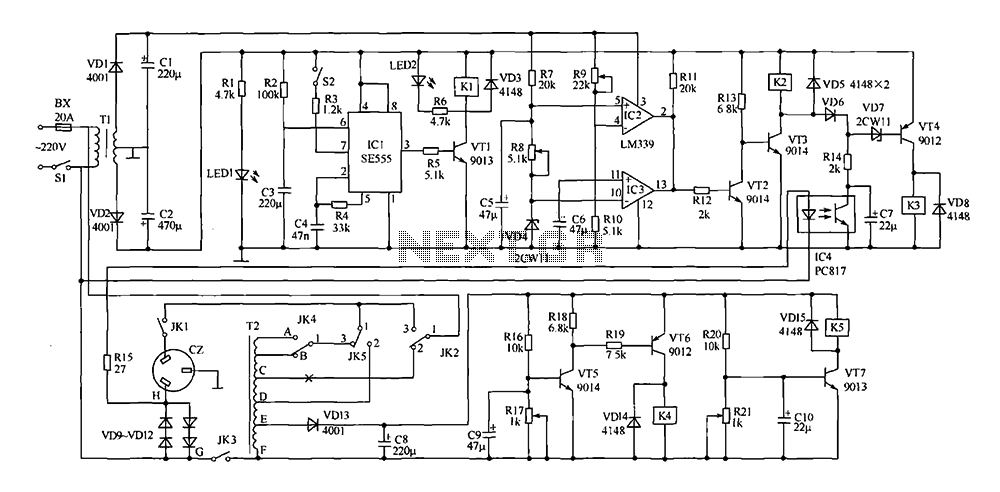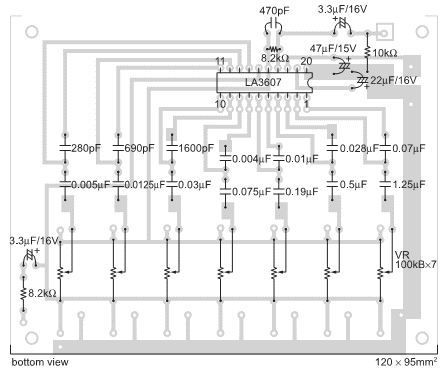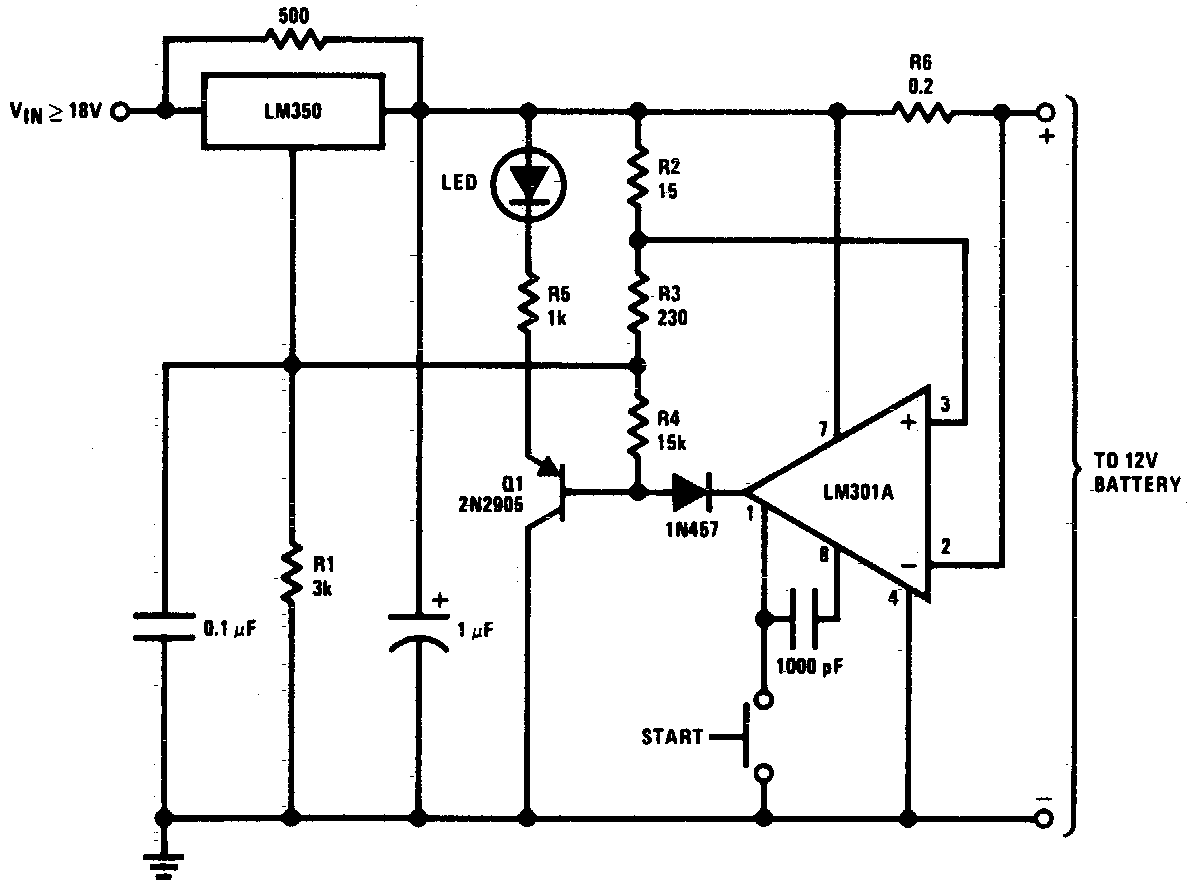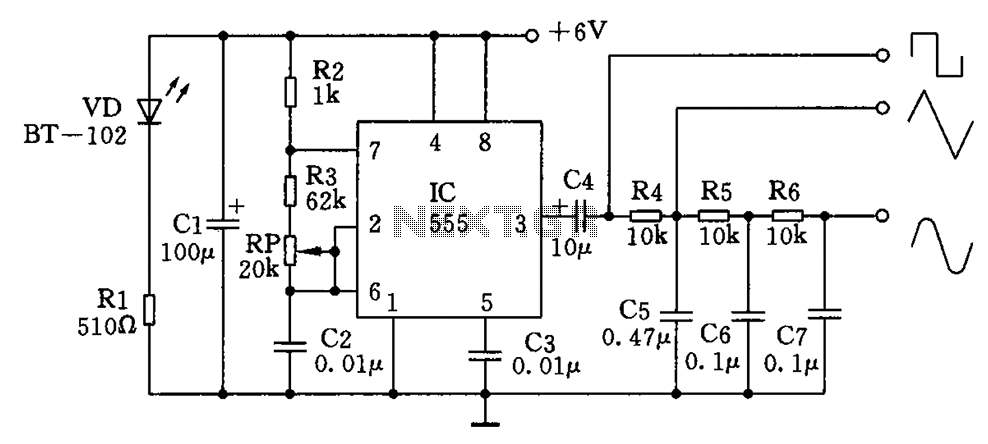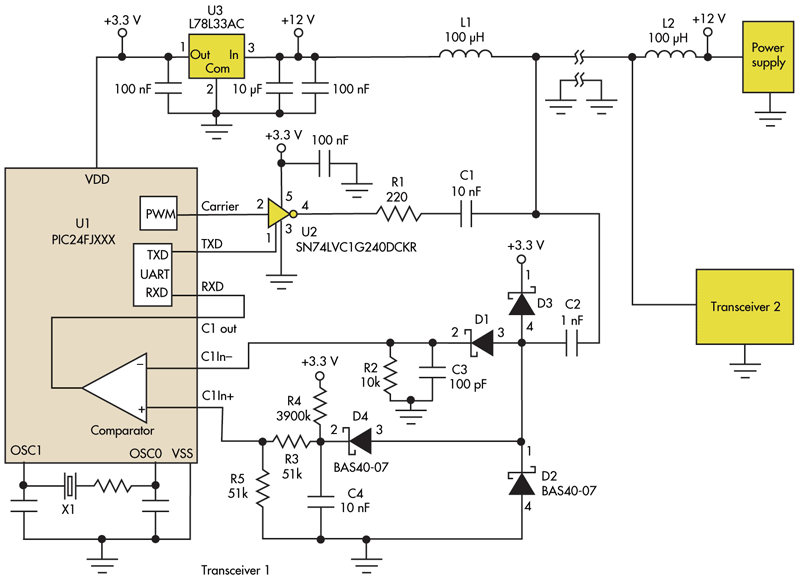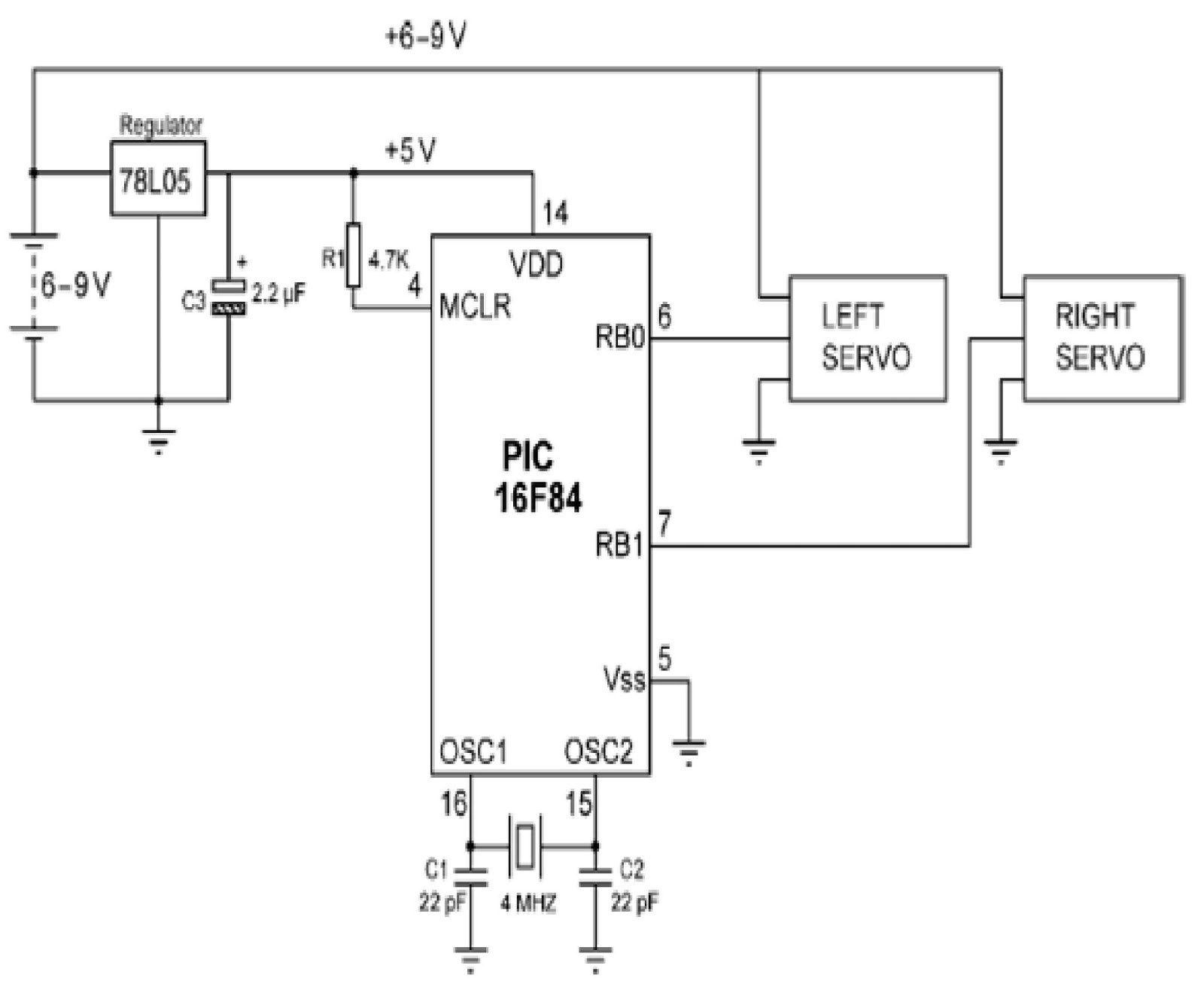
ACC FC-1 Remote Base Interface circuit

All of ACC's repeater and remote base products support the control of synthesized remote base transceivers. One form of frequency control supported is compatible with transceivers using thumbwheel frequency selection. The controllers supply BCD (binary coded decimal) formatted data in a serial bit stream, which may be captured by external shift registers to drive the transceiver's frequency synthesizer, simulating the thumbwheel switches. The FC-1 board may be used with the RC-850, RC-96, and RC-85 Repeater Controllers, the ITC-32 Intelligent Touch-Tone Control Board, and ShackMaster. It provides the frequency control interface for the ICOM IC-2A/3A/4A (or AT) transceiver. With minor modifications, it will control certain other BCD format transceivers (such as the Icom IC-22U). In addition, it can recover expanded remote control output functions for several of the controllers. The applications include: The board is useful for controlling an IC-2A / 3A / 4A (or AT) with any ACC controller. It may be adapted for the other applications listed above, but in some cases, it may be simpler to duplicate its circuitry or the circuitry in the controller manual in another format better suited to the application. It requires suitable construction equipment including a temperature-controlled soldering station, and suitable test equipment such as a good meter or oscilloscope. It also requires relatively advanced construction and troubleshooting skills and an understanding of digital circuitry. ACC specifically disclaims responsibility for damage that may result to your transceiver. While the FC-1 may be modified to control a variety of BCD controllable transceivers, ACC has direct experience with only certain transceivers, as described in this note. Input on successful interfaces to other transceivers is welcomed, and this information will be made available to others on an as-is basis upon request. Technical assistance is limited to those transceivers with which ACC has direct experience. The FC-1 board fits into a repeater or remote base system as shown below. It is driven by the controller and supplies frequency information to the BCD controllable transceiver. The FC-1 board can also provide expanded general-purpose remote control outputs when the controller includes this capability as part of the serial bit stream, such as the RC-85 or RC-96 controllers and ShackMaster. The layout of the FC-1 board is shown below. Several of the circuits on the board apply only to ShackMaster and are labeled as they pertain to the ShackMaster application of interfacing to the ICOM IC-751 HF transceiver keypad connector. The FC-1 board may be mounted in any convenient manner in the installation, but it is designed to fit directly into a Unibox 130 standard enclosure, manufactured by Amerex. Uniboxes are available from many electronic suppliers. The Unibox enclosure is plastic, but it may be preferable to use an RF-tight metal enclosure depending on the installation. The ICOM IC-2A, IC-3A, and IC-4A transceivers are low-cost synthesized handheld rigs that are easily controllable with external BCD frequency and offset logic signals. The "T" models are identical except that they have a built-in front panel DTMF (touch-tone) pad. For applications in high RF environments, it may be necessary to mount the transceiver in an RF-tight enclosure, such as a Bud Econobox, for optimum performance. Signals entering and leaving the enclosure may go through feedthrough capacitors, as with any high-performance repeater RF equipment. The FC-1 board may be mounted inside the enclosure with the transceiver to minimize the number of I/O lines requiring feedthrough capacitors. Care must be taken to avoid degrading the rise times of the clock and data signals from the controller; it may be necessary to reduce the pull-up resistors (R1, R2, and R3) to 1K to restore fast signal integrity.
The FC-1 board serves as a critical interface in the ACC repeater and remote base system, enabling seamless communication between the controller and various BCD-compatible transceivers. The board’s architecture is designed to accommodate the specific needs of synthesized remote base transceivers, particularly those utilizing thumbwheel frequency selection. By outputting BCD formatted data in a serial bit stream, the FC-1 effectively simulates the functionality of thumbwheel switches, allowing for precise frequency control.
The integration of the FC-1 board with controllers such as the RC-850, RC-96, and RC-85 enhances the versatility of the system, providing compatibility with a range of transceivers including the ICOM IC-2A/3A/4A models. The board's ability to adapt to other BCD format transceivers, with minor modifications, broadens its application scope, making it a valuable tool for operators seeking to optimize their remote base setups.
Installation of the FC-1 board requires careful consideration of both the physical and electrical aspects to ensure optimal performance. The recommended use of a temperature-controlled soldering station and precise test equipment, such as a multimeter or oscilloscope, highlights the necessity for advanced construction skills. The board's design also accommodates the potential for expanded remote control outputs, contingent upon the capabilities of the connected controller.
When considering housing for the FC-1 board, the choice between a plastic Unibox and an RF-tight metal enclosure should be made based on the specific operational environment. In high RF environments, utilizing an RF-tight enclosure can prevent interference and ensure signal integrity. The strategic placement of the FC-1 board within the enclosure can further minimize the need for additional feedthrough capacitors, enhancing overall signal performance.
In summary, the FC-1 board is a sophisticated component that facilitates the control of synthesized remote base transceivers, offering flexibility and adaptability for various applications. Its integration into repeater systems requires careful planning and execution to ensure reliable operation and optimal performance in diverse operational contexts.All of ACC`s repeater and remote base products support control of synthesized remote base transceivers. One form of frequency control supported is compatible with transceivers using thumbwheel frequency selection.
The controllers supply BCD (binary coded decimal) formatted data in a serial bit stream, which may be captured by external shift regist ers to drive the transceiver`s frequency synthesizer, simulating the thumbwheel switches. The FC-l board may be used with the RC-850, RC-96, and RC-85 Repeater Controllers, the ITC-32 Intelligent Touch-Tone Control Board and ShackMaster. It provides the frequency control interface for the ICOM IC-2A/3A/4A (or AT) transceiver. With minor modifications, it will control certain other BCD format transceivers (such as the Icom IC-22U).
In addition, it can recover expanded remote control output functions for several of the controllers. The applications include: The board is useful for controlling an IC-2A / 3A / 4A (or AT) with any ACC controller. It may be adapted for the other applications listed above, but in some cases it may be simpler to duplicate its circuitry or the circuitry in the controller manual in another format better suited to the application.
It requires suitable construction equipment including a temperature controlled soldering station, and suitable test equipment such as a good meter or oscilloscope. It also requires relatively advanced construction and troubleshooting skills and an understanding of digital circuitry.
ACC specifically disclaims responsibility for damage which may result to your transceiver. While the FC-1 may be modified to control a variety of BCD controllable transceivers, ACC has direct experience with only certain transceivers, as described in this note. We welcome your input on successful interfaces to other transceivers, and we will make this information available to others on an as-is basis on request.
We regret that we can provide technical assistance only for those transceivers with which we have direct experience. The FC-1 board fits into a repeater or remote base system as shown below. It is driven by the controller and supplies frequency information to the BCD controllable transceiver.
The FC-1 board can also provide expanded general purpose remote control outputs when the controller includes this capability as part of the serial bit stream, such as the RC-85 or RC-96 controllers and ShackMaster. The layout of the FC-1 board is shown below. Several of the circuits on the board apply only to ShackMaster and are labeled as they apply to the ShackMaster application of interfacing to the ICOM IC-751 HF transceiver keypad connector.
The FC-1 board may be mounted in any way convenient in your installation, but it is designed to fit directly into a Unibox 130 standard enclosure, manufactured by Amerex, PO Box 2815, Riverside, CA 92516, (909)686-1400. Uniboxes are available from many electronic suppliers. The Unibox enclosure is plastic. It may be preferable to use an RF tight metal enclosure, depending on your installation. The ICOM IC2A, IC3A and IC4A transceivers are low cost synthesized hand held rigs which are easily controllable with external BCD frequency and offset logic signals.
The "T" models are identical except tht they have a built in front panel DTMF (touchtone) pad. For applications in high if environments, it may be necessary to mount the transceiver in an rf tight enclosure, such as a Bud Econobox, for optimum performance. Signals entering and leaving the enclosure may go through feedthrough capacitors, as with any high performance repeater rf equipment.
The FC-1 board may mount inside the enclosure with the transceiver to minimize the number of I/O lines requiring feedthrough capacitors. Be careful about degrading the rise times of the clock and data signals from the controller - it may be necessary to reduce the pull-up resistors (R1, R2, and R3) to 1K to restore fast
🔗 External reference
The FC-1 board serves as a critical interface in the ACC repeater and remote base system, enabling seamless communication between the controller and various BCD-compatible transceivers. The board’s architecture is designed to accommodate the specific needs of synthesized remote base transceivers, particularly those utilizing thumbwheel frequency selection. By outputting BCD formatted data in a serial bit stream, the FC-1 effectively simulates the functionality of thumbwheel switches, allowing for precise frequency control.
The integration of the FC-1 board with controllers such as the RC-850, RC-96, and RC-85 enhances the versatility of the system, providing compatibility with a range of transceivers including the ICOM IC-2A/3A/4A models. The board's ability to adapt to other BCD format transceivers, with minor modifications, broadens its application scope, making it a valuable tool for operators seeking to optimize their remote base setups.
Installation of the FC-1 board requires careful consideration of both the physical and electrical aspects to ensure optimal performance. The recommended use of a temperature-controlled soldering station and precise test equipment, such as a multimeter or oscilloscope, highlights the necessity for advanced construction skills. The board's design also accommodates the potential for expanded remote control outputs, contingent upon the capabilities of the connected controller.
When considering housing for the FC-1 board, the choice between a plastic Unibox and an RF-tight metal enclosure should be made based on the specific operational environment. In high RF environments, utilizing an RF-tight enclosure can prevent interference and ensure signal integrity. The strategic placement of the FC-1 board within the enclosure can further minimize the need for additional feedthrough capacitors, enhancing overall signal performance.
In summary, the FC-1 board is a sophisticated component that facilitates the control of synthesized remote base transceivers, offering flexibility and adaptability for various applications. Its integration into repeater systems requires careful planning and execution to ensure reliable operation and optimal performance in diverse operational contexts.All of ACC`s repeater and remote base products support control of synthesized remote base transceivers. One form of frequency control supported is compatible with transceivers using thumbwheel frequency selection.
The controllers supply BCD (binary coded decimal) formatted data in a serial bit stream, which may be captured by external shift regist ers to drive the transceiver`s frequency synthesizer, simulating the thumbwheel switches. The FC-l board may be used with the RC-850, RC-96, and RC-85 Repeater Controllers, the ITC-32 Intelligent Touch-Tone Control Board and ShackMaster. It provides the frequency control interface for the ICOM IC-2A/3A/4A (or AT) transceiver. With minor modifications, it will control certain other BCD format transceivers (such as the Icom IC-22U).
In addition, it can recover expanded remote control output functions for several of the controllers. The applications include: The board is useful for controlling an IC-2A / 3A / 4A (or AT) with any ACC controller. It may be adapted for the other applications listed above, but in some cases it may be simpler to duplicate its circuitry or the circuitry in the controller manual in another format better suited to the application.
It requires suitable construction equipment including a temperature controlled soldering station, and suitable test equipment such as a good meter or oscilloscope. It also requires relatively advanced construction and troubleshooting skills and an understanding of digital circuitry.
ACC specifically disclaims responsibility for damage which may result to your transceiver. While the FC-1 may be modified to control a variety of BCD controllable transceivers, ACC has direct experience with only certain transceivers, as described in this note. We welcome your input on successful interfaces to other transceivers, and we will make this information available to others on an as-is basis on request.
We regret that we can provide technical assistance only for those transceivers with which we have direct experience. The FC-1 board fits into a repeater or remote base system as shown below. It is driven by the controller and supplies frequency information to the BCD controllable transceiver.
The FC-1 board can also provide expanded general purpose remote control outputs when the controller includes this capability as part of the serial bit stream, such as the RC-85 or RC-96 controllers and ShackMaster. The layout of the FC-1 board is shown below. Several of the circuits on the board apply only to ShackMaster and are labeled as they apply to the ShackMaster application of interfacing to the ICOM IC-751 HF transceiver keypad connector.
The FC-1 board may be mounted in any way convenient in your installation, but it is designed to fit directly into a Unibox 130 standard enclosure, manufactured by Amerex, PO Box 2815, Riverside, CA 92516, (909)686-1400. Uniboxes are available from many electronic suppliers. The Unibox enclosure is plastic. It may be preferable to use an RF tight metal enclosure, depending on your installation. The ICOM IC2A, IC3A and IC4A transceivers are low cost synthesized hand held rigs which are easily controllable with external BCD frequency and offset logic signals.
The "T" models are identical except tht they have a built in front panel DTMF (touchtone) pad. For applications in high if environments, it may be necessary to mount the transceiver in an rf tight enclosure, such as a Bud Econobox, for optimum performance. Signals entering and leaving the enclosure may go through feedthrough capacitors, as with any high performance repeater rf equipment.
The FC-1 board may mount inside the enclosure with the transceiver to minimize the number of I/O lines requiring feedthrough capacitors. Be careful about degrading the rise times of the clock and data signals from the controller - it may be necessary to reduce the pull-up resistors (R1, R2, and R3) to 1K to restore fast
🔗 External reference
